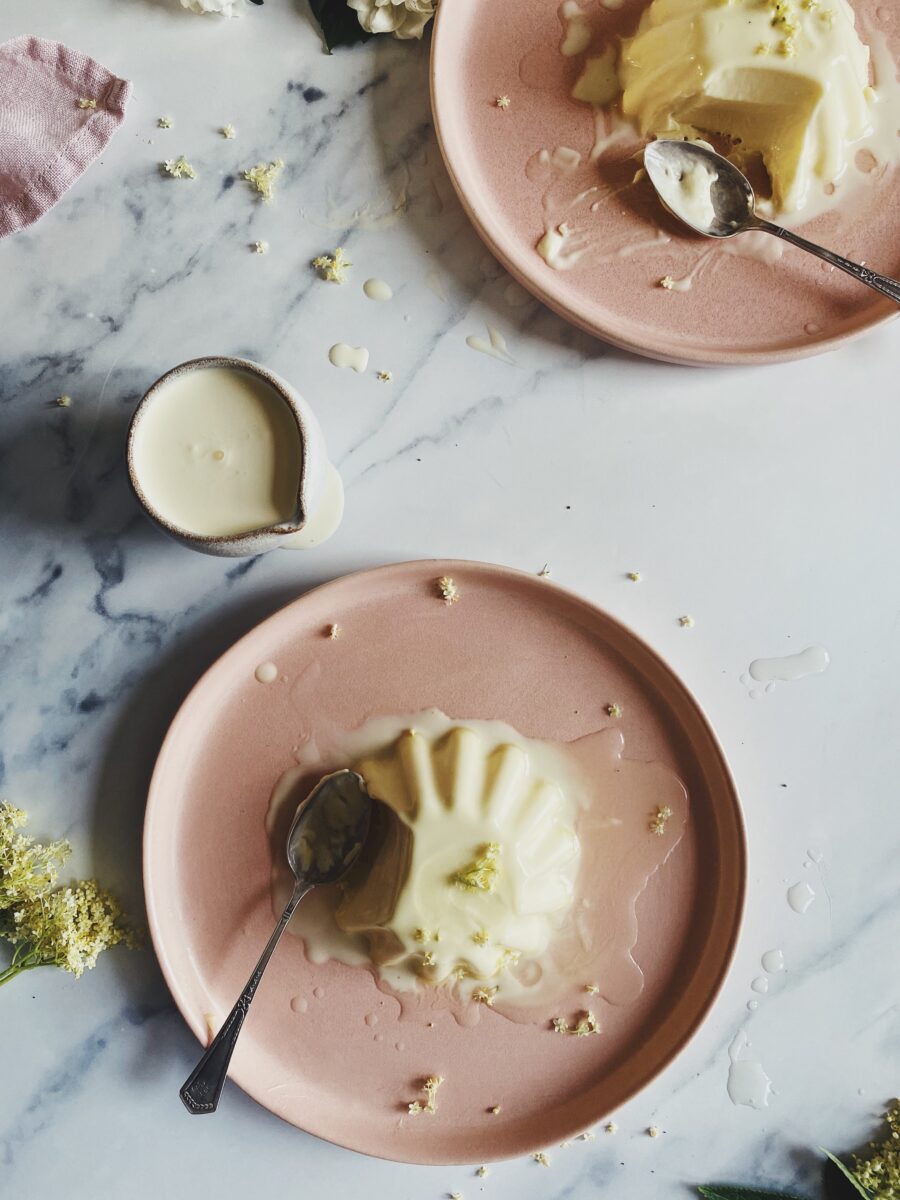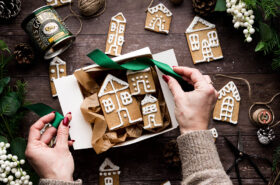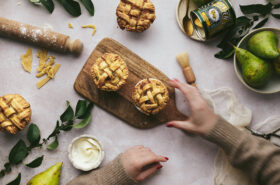If there’s a dessert that screams summer the most, it’s got to be a panna cotta – a pudding that’s all about the mouthfeel. Smooth, velvety with enough structure to stand tall on a spoon, but delicate enough that it melts in the mouth, it’s sweetness light and fresh. The creaminess of the dairy and warmth of the vanilla complements the slightly floral and unique flavour of the elderflower – nuanced by pear, lychee and a slightly tropical tang.
Summers are all about easy, refreshing dishes that allow for pause. You can serve this with a beautiful berry coulis and a crunchy oat topping, or a drizzle of elderflower cordial. I also love the idea of serving it alongside kumquat – the sour tangy flavour balancing out the sweetness of the elderflower. These are easy to make in advance, and keep in the fridge ready for turning out just before serving.

What alternative ingredients can I use?
- Milk: I like using whole / full-fat milk for this recipe for an extra creamy texture but semi-skimmed has enough fat content to work well too.
- Vanilla: a personal favourite is vanilla bean paste but you can use regular vanilla essence instead or omit this completely.
- Yoghurt: crème fraîche would also work but I like the tang of plain yoghurt best in this recipe.
- Elderflower cordial: you can use fresh elderflowers if you like – simply tie up the elderflower heads in a piece of muslin and add to the pan of milk and cream when you bring it to the boil. Once you turn off the heat, leave it to infuse for at least half an hour before removing the elderflower and adding the gelatin.
- Double cream: if you don’t have double cream, you can use single cream but the texture of your pannacotta may not be as rich.
- Gelatine: It’s easy to substitute sheet gelatin for powdered gelatin in any recipe. One sheet of leaf gelatin is equivalent to ~1 teaspoon (5 ml) of powdered gelatin.
How to forage for elderflower:
- Remember to ask permission before picking any elderflower.
- The blooms are flat-headed sprays of hundreds of tiny, five-petalled, creamy-white flowers with prominent stamens.
- Look for trees away from busy roads and always pick sprigs from higher up in the tree.
- Snip off the flower heads with as little stalk as possible and pop them into a large bag, remembering to pick off any small insects before using.
- Don’t run the flowers under a tap though, or you’ll wash the natural yeasts off. They’ll be fragile and will dry out quickly so picking fresh and using the same day is best.

What you’ll need to make this recipe
Elderflower pannacotta
- 100ml whole milk
- 250ml double cream
- 20g caster sugar
- 2tbsp elderflower cordial
- 1tsp vanilla bean paste
- 2 gelatine leaves
- 150ml plain yoghurt
- Prepare your gelatine by soaking it in cold water for 5–10 minutes, until soft and floppy,
- Combine the milk, cream and sugar in a saucepan. Stir in the elderflower cordial and vanilla bean paste, then bring just to the boil – but make sure it doesn’t bubble away.
- Squeeze out the excess water from your gelatine sheets then add to the hot cream mixture, stirring until completely dissolved.
- Leave to cool to room temperature, stirring from time to time.
- Once your mixture has cooled, stir in the yoghurt until thoroughly combined, then pour the mixture into four 125ml moulds and chill in the fridge for at least 4 hours, until set.
- To turn out, fill a bowl with hot water and dip your moulds into the water to loosen them. Place a plate upside down over the top and invert both the plate and the mould. Your panna cotta should slip out nicely.
- Serve with berries, kumquat or a drizzle of elderflower cordial.
If using fresh elderflower: you’ll need 8-10 sprigs for this recipe. At step 2, tie up your elderflower heads in a piece of muslin and add to the pan. Bring to the boil then leave for half an hour to infuse. When the time’s up, remove the muslin with the elderflower inside and continue to step 3.



